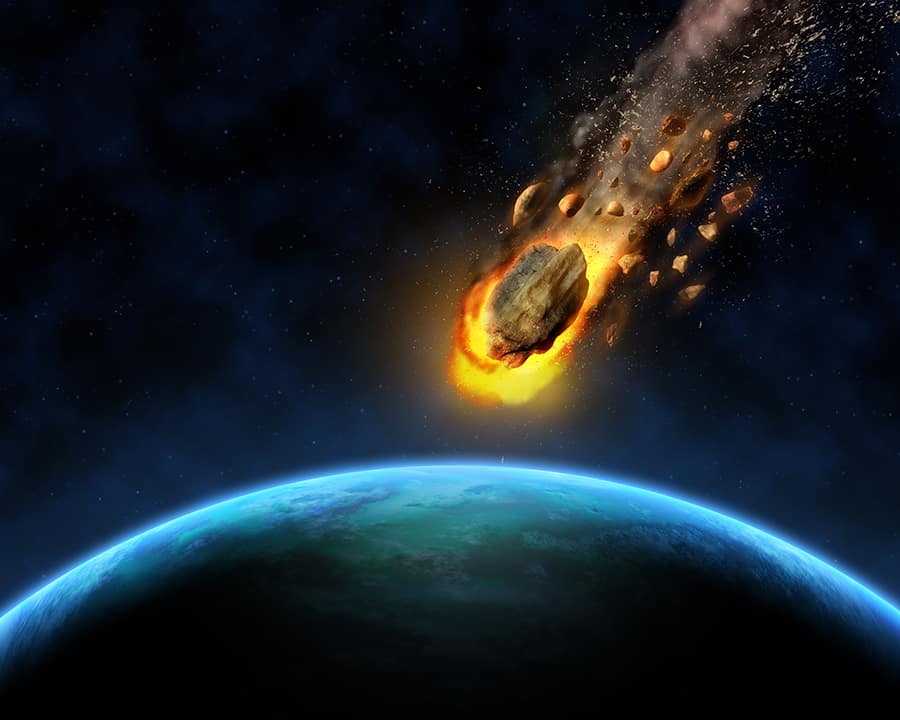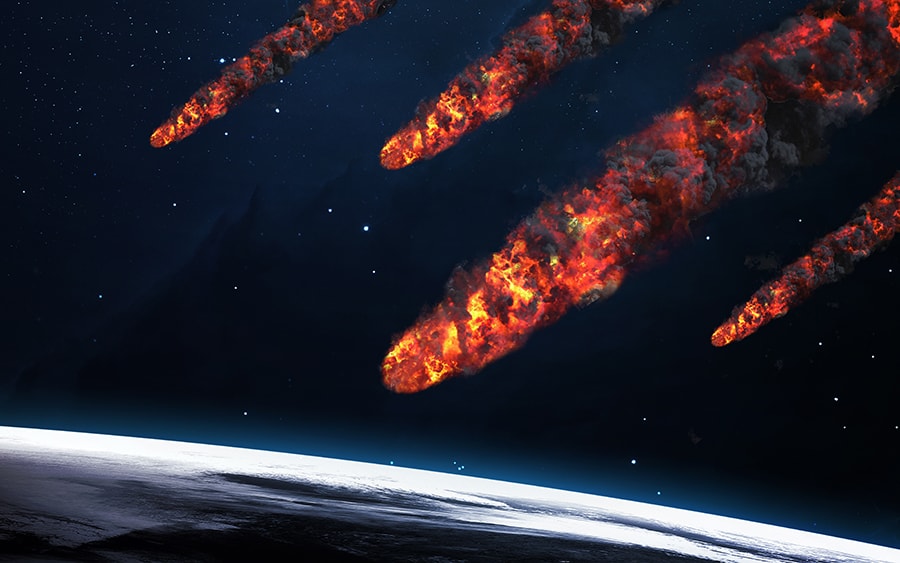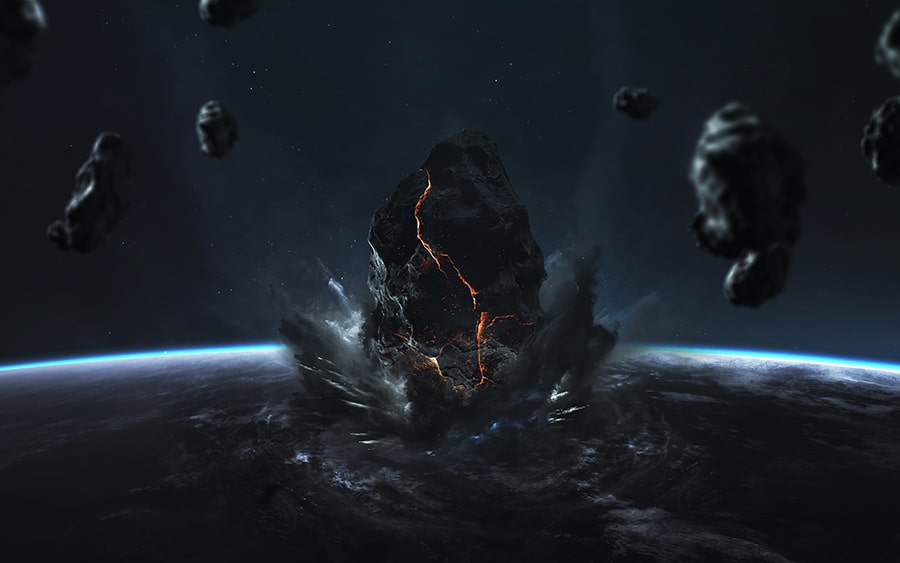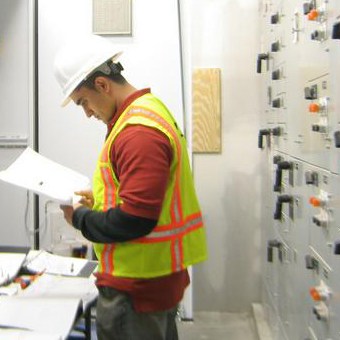How do we protect Earth from asteroids? Use explosives, booster jets, lasers, and other state-of-the-art hardware to divert them.
But the key here is a huge heads up! We need a big lead time to deflect an extinction-level asteroid. Sounds tough, right? A study from Cardiff University warns:
The sun’s movement through the Milky Way regularly sends comets hurtling into the inner solar system — coinciding with mass life extinctions on earth, a new study claims. The study suggests a link between comet bombardment and the movement through the galaxy.
So, even if we’re acing our asteroid-spotting skills, a ginormous space rock might still sneak up on us. The silver lining? The chances of a major collision happening anytime soon are pretty low.
However, given the vastness of cosmic time, a monstrous asteroid is bound to hit Earth one day. So, we gotta gear up for a dinosaur extinction class asteroid by mastering deflection techniques. Here are the top 5 popular methods we’ll explore:
- Blow up the asteroid
- Tether a spacecraft in the asteroid’s gravitational space
- Blast the asteroid with lasers
- Drill into the asteroid
- Alter the asteroid’s surface
But first, let’s get up close and personal with asteroids and why they’re a threat.
The threat from asteroids

Asteroids are like cosmic snowflakes, no two are alike. They also differ from comets in their composition.
Asteroids are usually a mix of rock and metal, while comets are icy, dusty, and contain a bit of rocky stuff. This is because asteroids form closer to the sun, where ice can’t stay solid.
Tiny asteroids, or meteoroids, bombard Earth daily. They can be as small as a grain of sand or as big as a few meters across. These space rocks are usually undetectable until they burn up in our atmosphere.
The small asteroids, properly called meteoroids, strike Earth daily. They measure as small as a grain of sand, to a few meters across. This makes them undetectable until they burn up in our atmosphere.
NASA says,
Space rocks smaller than about 25 meters (about 82 feet) will most likely burn up as they enter the Earth’s atmosphere and cause little or no damage.
Luckily, we can spot big asteroids more easily, which is crucial. Why? Because objects larger than 25 meters can wreak some serious havoc.
For example, on February 15th, 2013, a small asteroid burst into Earth’s atmosphere near Chelyabinsk, Russia. It was only about 18 meters wide and weighed a whopping 9,979,000 kg, according to NASA. The meteor transformed into a fiery spectacle in the sky, raining down meteorite fragments.
The aftermath? An awe-inspiring shockwave that caused 1,491 indirect injuries and trashed 7,200 buildings.
But size isn’t the only factor at play. The angle of impact and composition matter just as much.
Picture an icy asteroid skimming over the ocean. Now, envision an iron asteroid slamming into rocky ground at a 90° angle. The difference would be mind-blowing.

Important Note: We’ve spotted many large objects with near-miss orbits around Earth. New asteroids are always popping up, and some could threaten humanity.
In a worst-case scenario, we might have just a year to prepare for a collision. More likely, though, we’ll find an object whose crash course with Earth is several orbits away. That should give us decades to get our asteroid-deflecting act together.
Calculating the impulse to deflect a mega asteroid hurtling towards Earth
When we spot an asteroid, we can calculate its orbit super accurately, figuring out if it might collide with Earth years ahead of time. But what if we don’t have that kind of advance warning? Or even scarier, what if the asteroid is a total beast, like the size of Ceres?
For this wild case study, I’m diving into some seriously spine-chilling scenarios. Picture an asteroid as massive as Ceres racing towards Earth with almost no time to react. And just to make it more intense, it’s coming at us head-on!

Important Note: Ceres has a diameter of 946 km and a mass of ![]() kg. For perspective, the moon’s diameter is 3,474.2 km.
kg. For perspective, the moon’s diameter is 3,474.2 km.
First, let’s break down the problem. Earth has a radius of 6,378 km, so we need to change the asteroid’s course by at least that much. To calculate the change in velocity (Delta-v) needed to avoid a disastrous collision, we use a simple velocity equation:
Velocity = Distance / Time

Important Note: Delta-v is a change in velocity. If you’re driving 40 mph and speed up to 80 mph, your delta-v is 40 mph.
With rockets, Delta-v is all about how much speed a rocket can achieve by burning through its entire fuel load.
If the asteroid’s set to strike Earth in 365 days, our calculation goes like this:
6,378,000 meters / (365 days x 24 hours x 60 minutes x 60 seconds) = 0.2 m/sec
Let’s check out the same calculation for these other impact windows of time:
- 1 day: 73.8 m/sec
- 10 days: 7.4 m/sec
- 365 days: 0.2 m/sec
Using Ceres’ mass, we can figure out the total impulse needed to deflect the asteroid, measured in N⋅s. To help you wrap your head around these jaw-dropping numbers, I’ll compare them to the maximum impulse of a Saturn V rocket (you know, the gigantic rocket NASA used in the Apollo program to send people to the Moon).
According to Wikipedia, a Saturn V rocket has a specific impulse of 2.58 km/sec and a gross weight of 2,290,000 kg. That means it can generate (2,580 m/sec) x (2,290,000 kg) = ![]() N⋅s of impulse. Here’s what we’d need to divert the asteroid in our different timeframes:
N⋅s of impulse. Here’s what we’d need to divert the asteroid in our different timeframes:
- 1 day: 73.8 m/sec requires
 N⋅s or 11,745,762,711,864 Saturn V rockets
N⋅s or 11,745,762,711,864 Saturn V rockets - 10 days: 7.4 m/sec requires
 N⋅s or 1,177,966,101,695 Saturn V rockets
N⋅s or 1,177,966,101,695 Saturn V rockets - 365 days: 0.2 m/sec requires
 N⋅s or 31,864,406,780 Saturn V rockets
N⋅s or 31,864,406,780 Saturn V rockets
Long story short, if an asteroid the size of Ceres barrels towards Earth, it’d be game over for humans. We couldn’t do a thing. But what if we had a whole century to prepare or 36,500 days?
- 36,500 days: 0.002 m/sec requires
 N⋅s or 318,644,068 Saturn V rockets
N⋅s or 318,644,068 Saturn V rockets
Even with a century’s warning, we’d still be doomed!
But what about the asteroid that wiped out the dinosaurs, the Chicxulub asteroid?
Calculating the impulse to deflect a Chicxulub-sized asteroid hurtling toward Earth
Using Wikipedia data, the asteroid is roughly 17 km in diameter with a mass of 6.82×10^15 kg. Doing the same math, we calculate the following total impulses for deflection:
- 1 day: 73.8 m/sec requires
 N⋅s or 85,254,237 Saturn V rockets
N⋅s or 85,254,237 Saturn V rockets - 10 days: 7.4 m/sec requires
 N⋅s or 8,559,322 Saturn V rockets
N⋅s or 8,559,322 Saturn V rockets - 365 days: 0.2 m/sec requires
 N⋅s or 230,508 Saturn V rockets
N⋅s or 230,508 Saturn V rockets - 36,500 days: 0.002 m/sec requires
 N⋅s or 2,305 Saturn V rockets
N⋅s or 2,305 Saturn V rockets
We can’t even divert the smaller dino-killer asteroid if we’re late to the party. So, the name of the game is early detection. The sooner we spot a massive asteroid headed our way, the better our chances of survival.
One thing’s clear: the closer an asteroid is to impact, the more energy we need to divert it. The Delta-v required for deflection grows exponentially as the asteroid gets closer.
In fact, even using the total energy consumed by all humans in one year wouldn’t be enough. If a killer asteroid is just weeks away, we’re goners.

Important Note: A concentrated short blast on Earth’s crust is super dangerous. We’re talking nuclear winters, non-stop volcanic activity, and polluted skies galore. The impact energy is released as heat, a shockwave, or both.
Deflection Technique #1: Blow up the asteroid

Why not fire missiles at the asteroid? Blowing things up is always a cool option, right?
Assuming the asteroid isn’t gigantic and missiles are viable, one or both of these things need to happen after the strike:
- The asteroid fragments burn up in Earth’s atmosphere
- The asteroid fragments divert away from Earth and don’t come back later
One issue is that we don’t know much about the insides of asteroids. We know even less about specific asteroids, which makes it tricky to predict where the fragments will go.
For instance, if the asteroid explodes, we might end up with a bunch of smaller rocks raining down on Earth instead of one big one. That’s why using explosives is a last-resort option.

Important Note: Debris from explosions won’t just float off into space. They need to reach the escape velocity of the asteroid’s gravitational field to separate from the asteroid for good.
That’s why you need a super-strong explosion to create the necessary escape velocity for the debris. If the debris is far enough away, it won’t recombine due to weak gravity and limited time.
Vaporize the asteroid
Another option is to detonate nuclear weapons near the asteroid. An initial blast would emit radiation to vaporize one side of the asteroid.
A secondary explosion would then eject the vaporized part of the asteroid. The vaporized material would hopefully separate from the asteroid’s gravitational field forever. But any large broken pieces probably wouldn’t reach escape velocity. However, the explosion might still help change the asteroid’s orbit.
Deflection Technique #2: Tether a spacecraft in the asteroid’s gravitation space

Picture this: we send a hefty spacecraft, known as a gravity tractor, to cozy up next to an asteroid. With enough warning, we can tweak the asteroid’s orbit just enough to make it miss Earth, all thanks to the gravitational attraction between the two bodies. It’s like the asteroid’s taking baby steps towards the tractor, just a few millimeters per second.
For this daring mission, we’d employ spacecraft with high-specific impulse thrusters. These space vehicles would use a tiny bit of thrust to avoid being sucked into the asteroid. If one spacecraft runs out of fuel to maintain its Delta-v, we’d switch it up with another, like a thrilling cosmic relay race!

Important Note: The tractor needs to get up close and personal with the asteroid. This bumps up the required Delta-v, making things a bit trickier.
Deflection Technique #3: Blast the asteroid with a laser

Imagine a probe equipped with a laser, vaporizing a chunk of the asteroid. The exhaust from the asteroid’s surface would create a force, nudging it off course. Pretty cool, right?
But here’s the catch: we’d need one heck of a powerful laser! And it’s got some stiff competition with sunlight constantly bathing the asteroid’s surface.
Also, think about the logistics: we’d have to mount the laser on a spacecraft, power it up, and deal with the laser pushing itself in the opposite direction. It’s like trying to ride a rocket powered by laser propulsion!

Important Note: A nifty alternative could be the “mirror bee” concept. Picture a swarm of mini spacecraft, each carrying a mirror, all headed towards the asteroid. These little guys would focus reflected sunlight onto one spot, causing vaporization and creating propulsive jets.
Deflection Technique #4: Drill into the asteroid
Remember that wild ride of a movie, Armageddon? The intense, adrenaline-pumping action scenes were hard to forget. But let’s be real – it was like watching a train wreck in slow motion. It was entertaining, but utterly ridiculous when you think about the physics.
The asteroid in the film is roughly 1,000 km in diameter – nearly the size of Ceres. And get this: NASA discovers the asteroid just 18 days before impact. Talk about cutting it close! To put things into perspective, some physics students in England crunched the numbers for us.
To split that asteroid, we’d need 800 trillion terajoules of energy. The most powerful bomb, “Big Ivan,” has only 418,000 terajoules. So, we’d need a bomb 2 billion times more powerful. Yeah, good luck with that!
And let’s not forget about the pesky issue of drilling without gravity. Without it, the drill bit would barely scratch the surface. And with no air, we can’t create a vacuum to hold the drill down. Sure, we could anchor the drill, but what if there’s nothing to hold onto? Maybe the asteroid’s just a bunch of loose material…
Bottom line: Armageddon was pure popcorn entertainment!
Deflection Technique #5: Altering the asteroid’s surface
Imagine wrapping the asteroid in reflective material, creating a solar sail. This could change the asteroid’s orbit through reflected radiation.
Radiation pressure would provide a tiny push in the radial direction, while the Yarkovsky effect would give an even tinier transverse thrust.
It might work on small asteroids, but it’s not practical for giant space rocks miles in diameter.
What are we actually doing to prepare for an asteroid impact?

Frankly, it’s mind-blowing how little solid science we have on detecting and deflecting asteroids. These cosmic threats could wipe us off the map, yet we’re busy pouring cash into military budgets and other trivial pursuits. Isn’t it time we focus on what truly matters in the big picture?
To be honest, we’re just not doing enough to protect our beautiful, blue planet.
I get it, though. Trying to convince people to care about asteroid detection and deflection feels like trying to sell ice to Eskimos. But if we knew for sure that a giant space boulder was barreling straight at us, well, that’s a different story.
Imagine this: NASA announces a gigantic asteroid is zooming straight for Earth. Politicians worldwide freak out, and people everywhere join forces to find a solution.
It’s kind of like climate change—except since that’s a slow-motion catastrophe, we don’t see its effects right away, making it harder to rally the public.
Asteroid detection challenges
Some cosmic objects are tricky to spot. Take an object with a long orbital period and a high velocity in the inner solar system, for example. We’d probably be able to easily detect it.
But there are those sneaky ones hiding outside the Sun’s orbit, like Oumuamua, the first known interstellar object to pass by Earth. It was around 400 meters across and zipped along at a jaw-dropping 59,000 miles per hour—nearly twice as fast as our manmade Voyager, clocking in at about 35,000 miles per hour.

Important Note: Not all asteroids are big, solid hunks of rock. There’s (29075) 1950 DA, an asteroid that might one day strike Earth. It’s more like a pile of rubble, so our five deflection techniques wouldn’t work on it. You can’t just blow up a bunch of space debris.
The unfolding of events on Earth, with an incoming asteroid
Now, imagine this doomsday scenario: we spot a huge asteroid hurtling toward us and have only a few years to act. Here’s how things might go down, according to various experts:
- Gather solid proof that the asteroid poses an existential threat
- Inform politicians about the impending doom
- Secure funding to figure out how to deflect the asteroid
- Get all nations to join forces and speed up the project’s design and development
- Redirect global spending to fund the asteroid deflection project
- Make sure the deflection solution works the first time—there’s no room for a do-over
- Send the deflection solution into space to meet the incoming asteroid
NASA says we need a good heads-up to deflect a decent-sized asteroid. They say,
Even throwing a lot of resources at it, you would be talking 4 or 5 years to mount a deflection mission.
Personally, I think we need way more time than that. Just consider:
- A few years to accurately map the asteroid’s orbit for the interception
- A couple more years to prepare the mission
- About a year to open a launch window to reach the asteroid
- Several years to actually get to the asteroid
Bottom line: we need to keep a better eye on our cosmic neighborhood. That way, we can avoid any nasty surprises from interstellar space.

Important Note: Earth is like a single point of failure. But if we colonize Mars, we create a backup plan for humanity. If Earth ever gets clobbered by an asteroid, our Martian buddies could come back and repopulate our planet.
“How do we protect Earth from asteroids?” wrap up
A colossal asteroid crashing into Earth sounds like it’s ripped straight from a sci-fi novel. But it’s a cold, hard fact, which put an end to the dinosaurs’ reign about 66 million years ago.
Back in February 2018, the B612 Foundation declared,
“It’s 100 percent certain we’ll be hit by a devastating asteroid, but we’re not 100 percent sure when.”
This all serves as a stark reminder of our fragility as a species. Even with our cutting-edge tech, a big enough asteroid could still erase us from existence.
Our vulnerability in the cosmos is truly humbling.
What do you think about an asteroid barreling into Earth? Are we prepared to deflect a giant asteroid if given a 100-year heads-up? What’s the best technique to deflect a 1 km wide asteroid off course?

Author Bio: Koosha started Engineer Calcs in 2019 to help people better understand the engineering and construction industry, and to discuss various science and engineering-related topics to make people think. He has been working in the engineering and tech industry in California for well over 15 years now and is a licensed professional electrical engineer, and also has various entrepreneurial pursuits.
Koosha has an extensive background in the design and specification of electrical systems with areas of expertise including power generation, transmission, distribution, instrumentation and controls, and water distribution and pumping as well as alternative energy (wind, solar, geothermal, and storage).
Koosha is most interested in engineering innovations, the cosmos, sports, fitness, and our history and future.
